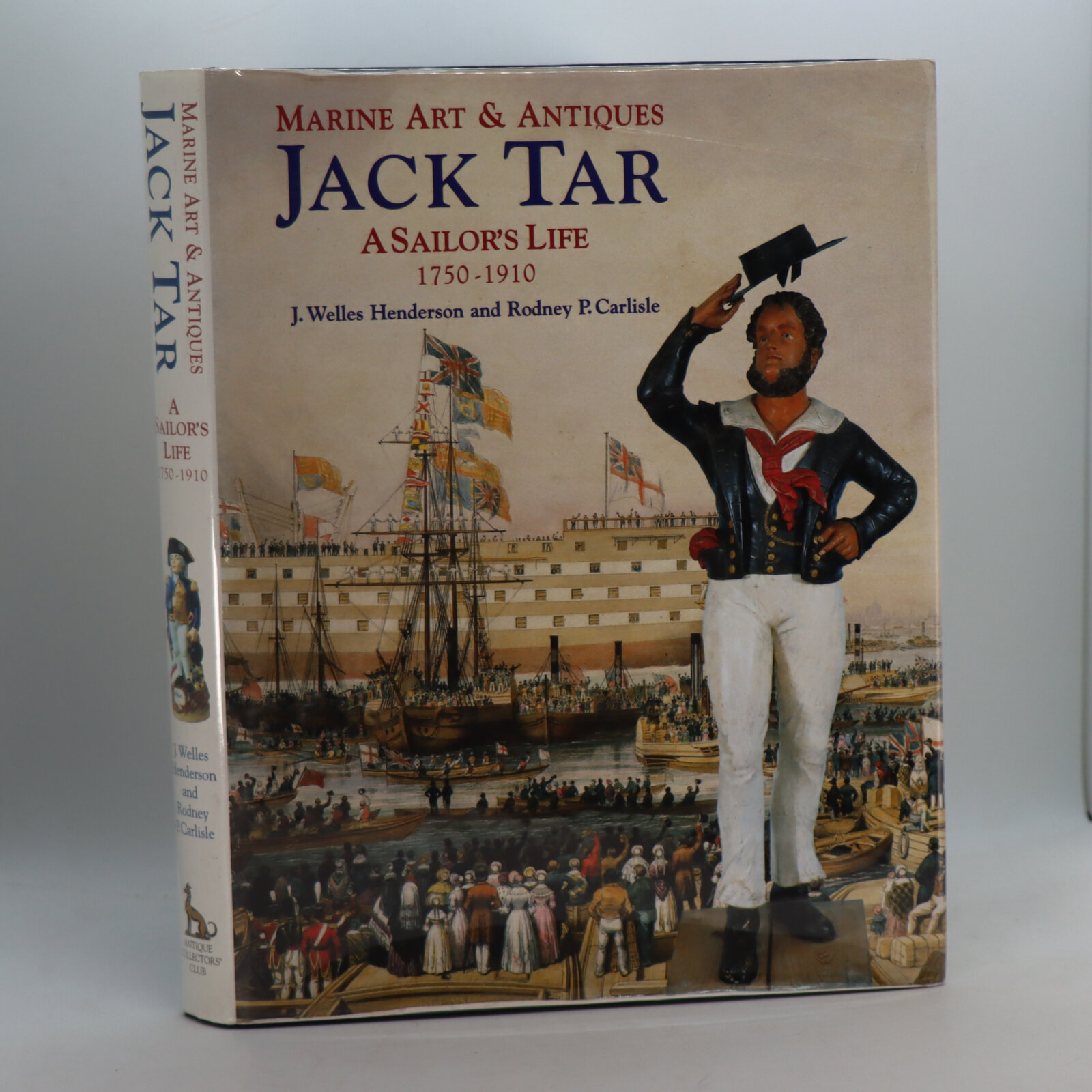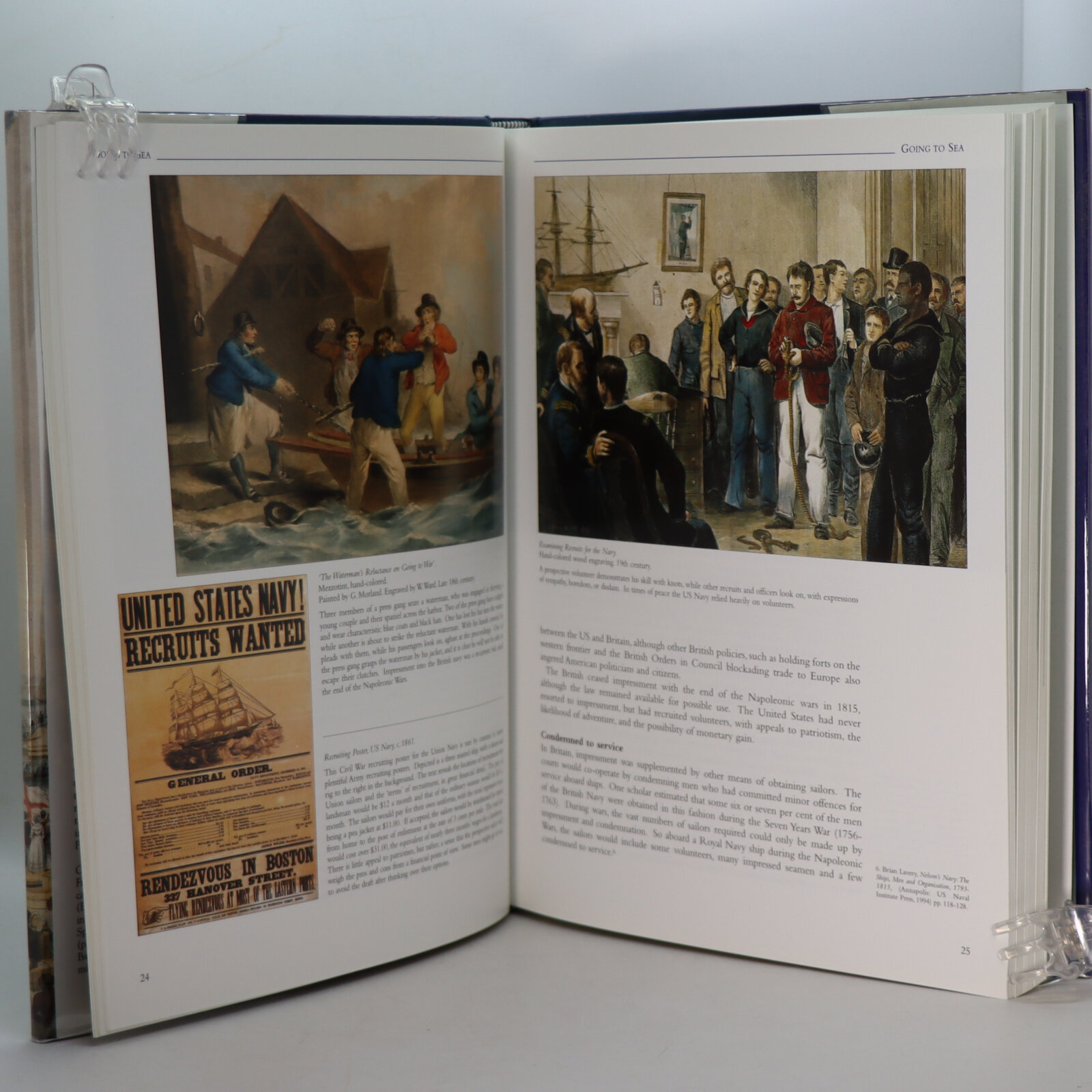Jack Tar. A Sailor's Life.
By J Welles Henderson
ISBN: 9780810856349
Printed: 1999
Publisher: Antique Collector's Club. Suffolk
Edition: First edition
| Dimensions | 22 × 28 × 3 cm |
|---|---|
| Language |
Language: English
Size (cminches): 22 x 28 x 3
Condition: Fine (See explanation of ratings)
Item information
Description
In the original dustsheet. Navy cloth binding with gilt title.
F.B.A. provides an in-depth photographic presentation of this item to stimulate your feeling and touch. More traditional book descriptions are immediately available.
A great book lovingly produced
Illustrates aspects of a seaman’s life, aboard and ashore, in the age of sail and early steam.
Jack Tar (also Jacktar, Jack-tar or Tar) is a common English term originally used to refer to seamen of the Merchant or Royal Navy, particularly during the period of the British Empire. By World War I the term was used as a nickname for those in the U.S. Navy. Members of the public and seafarers alike made use of the name in identifying those who went to sea. It was not used as a pejorative and sailors were happy to use the term to label themselves.
There is some dispute among historians about the origin of “Jack”, but it was a frequently used generic that identified the mass of common people. There are several plausible etymologies for the reference to “tar”:
In the age of wooden sailing vessels, a ship’s rigging was rope made of hemp, which would rot quickly in such a damp environment. To avoid this, the ropes and cables of the standing rig were soaked in tar, which had to be replenished by tarring.
Seamen were known to ‘tar’ their clothes before departing on voyages, in order to make them waterproof, before the invention of waterproof fabrics. Later they frequently wore coats and hats made from a waterproof fabric called tarpaulin. This may have been shortened to ‘tar’ at some point.
In a widely accepted myth with no period evidence, it said that Sailors smeared their hair with tar. In a book published in 1915 the author surmised that it was common among seamen to plait their long hair into a ponytail and smear it with high grade tar to prevent it getting caught in the ship’s equipment.
Want to know more about this item?

Related products
Share this Page with a friend













